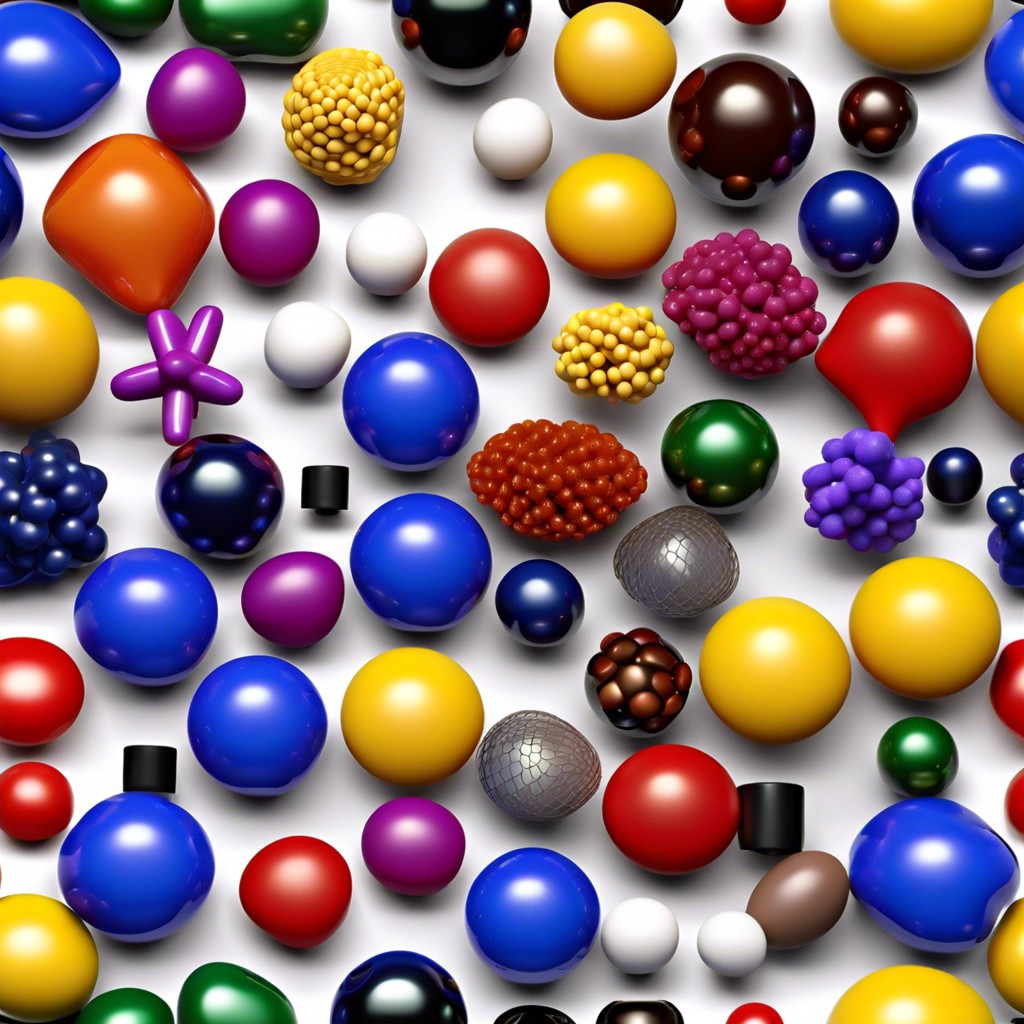Discover how polymer chemistry shapes our world, from everyday plastics to advanced building materials.
Key takeaways:
- Polymerization reactions create long chains from small molecules.
- Addition polymerization links monomers without leftovers.
- Condensation polymerization results in small byproducts, like water.
- Thermoplastics can be reshaped and melted, while thermosetting polymers are rigid.
- Common synthetic polymers include polyethylene, polypropylene, and nylon.
What Is a Polymer?

Imagine building a really long chain using paper clips. Each paper clip represents a smaller unit, called a monomer. When these monomers link up, they form a polymer. Polymers can be natural, like the cellulose in plants, or synthetic, like plastic.
Key points to get it:
- Monomers are the building blocks.
- When monomers join, they form a polymer.
- Think of it like a repeating pattern in beads on a string.
- Polymers can be incredibly complex or surprisingly simple.
Nature has its own polymers, like DNA and proteins, which are pretty much the celebrities of the polymer world. Synthetic ones are engineered in labs, bringing us goodies like nylon and rubber. And yes, they’re in your toothpaste too!
Types of Polymerization Reactions
Alright, let’s dive into the chemistry of making these versatile materials! Polymerization reactions are like the magical spells of polymer chemistry, turning simple molecules into long, stretchy chains. There are two main types:
First, we have Addition Polymerization. Imagine a chain link fence where each link snaps onto the next without losing any bits. That’s exactly what happens here, with small molecules (monomers) adding up to form a big polymer. For example, turning ethylene into polyethylene, the stuff in plastic bags.
Next, we have Condensation Polymerization. This one’s a bit more like a Lego build, but each time you snap pieces together, a small byproduct, like water, gets kicked out. Nylon, used in ropes and fabrics, is born this way.
Remember, addition is like snapping pieces without leftovers; condensation is like connecting pieces and tossing out little extras.
Thermoplastics Vs. Thermosetting Polymers
Imagine you have two kinds of Lego blocks. One set you can reshape and melt anytime you like. These are your thermoplastics. They’re the flexible gymnasts of the polymer world. Think of materials like polyethylene (used in plastic bags) and PVC (often found in pipes). They soften when heated and harden when cooled, over and over again, without losing their mojo.
Now, the other set of Lego blocks are like the heroic warriors from ancient tales. Once you put them together, they’re forever bound. These are thermosetting polymers. Picture materials like epoxy and bakelite. After being molded and set, trying to reshape them is like trying to convince a stubborn cat to take a bath. They’re rigid and resistant to heat, making them great for things like electrical insulation and auto parts.
So, thermoplastics are the shape-shifters, while thermosetting polymers are the die-hard guardians. Both have their superpowers depending on what you need in your construction project!
Common Synthetic Polymers
Polyethylene, a superstar in the polymer world, is found in everything from plastic bags to milk jugs. It’s strong, durable, and can handle a great deal of wear and tear.
Polypropylene is another household name, used in products like reusable containers and car parts. It’s resistant to chemicals and fatigue, making it a versatile material.
Polystyrene, or what you’d recognize as Styrofoam, is lightweight and an excellent insulator. Your takeout coffee cup might be thanking this polymer every morning.
Polyvinyl Chloride (PVC) is the go-to for plumbing pipes and vinyl flooring. It’s tough and resistant to rust – a plumber’s best friend.
Polyester, often found in fabrics, also plays a significant role in construction materials like resins and adhesives. It’s not just for your stylish shirt but also for holding your house together.
Nylon, famous for its use in textiles, is equally efficient in making ropes, gears, and even toothbrush bristles. It’s versatile and incredibly strong for its weight.
These common synthetic polymers are indispensable in our daily lives and construction, proving that chemistry isn’t just a lab coat and goggles game!
Environmental Impact and Sustainability of Polymers
Polymers are everywhere, including places they probably shouldn’t be. Plastics, the most common type, take hundreds of years to break down. That means they’re great at sticking around—good for storage, bad for Earth.
Recycling is like giving a second life to your favorite video game character. Many polymers can be melted down and reused, but not all can take this respawn opportunity. Thermosetting plastics get one shot; they’re stuck in their shape forever.
Biodegradable polymers break down faster and become part of nature again. They’re the comeback kid of the polymer world. Made from renewable sources like corn starch or sugarcane, they’re a greener option.
Still with us? Think about reducing plastic use. Simple choices, like reusable bags and water bottles, make a big impact. Small actions can turn the tide against a sea of plastic.
Recap




